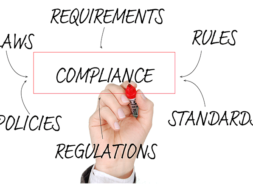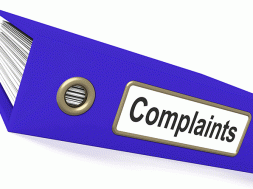
ADA Website Accessibility Simplified
By Gayla Huber, President, IntegriShield
If you have a business website, you could easily become the target of a website accessibility lawsuit. Some of you may have already been a target. The fact is, most websites are not compliant with Title III of the Americans with Disabilities Act (ADA). “Title III prohibits discrimination on the basis of disability in the activities of places of public accommodations (businesses that are generally open to the public).”1 The Americans with Disabilities Act (ADA) was passed in 1990. The Internet did not exist when it was passed. Part of the confusion that exists today is the lack of guidance from regulators on website compliance.
Here is what we know, and it is simple: the Department of Justice believes the ADA applies to websites. Though they have not issued regulations, companies should strive for AA compliance to reduce their risk.
There are three levels of accessibility compliance, A, AA, AAA.2 The standards are part of the Web Content Accessibility Guidelines (WCAG) published by the Web Accessibility Initiative (WAI) of the World Wide Web Consortium (W3C). This is a group of member companies who work together to develop accessibility guidelines. A is the lowest level. This level contains a set of accessibility standards you must meet to be considered A compliant. AA includes the same standards as A but additional and stricter standards when it comes to becoming accessible compliant. AAA is the highest. Most websites do not try to conform to AAA. It is the strictest of standards for accessibility.
Using AA compliance, one company did a study on 10,000,000 website pages and found that 98% were not accessible.3 Website accessibility has unfortunately been an area of compliance overcomplicated by lack of guidance from the government, lack of understanding the requirements by businesses and knowledge being withheld by companies who claim to be the experts. So how do we make this simple?
The first thing to do is understand you are taking a risk by not being compliant. Furthermore, as a decision-maker in your business, you have a reputation to consider. Disabled Americans have a right to access content without barriers. While most compliance efforts are an expense, there is a business case for making your website accessible. In the case of website accessibility, your compliance could open you up to additional revenue. There are more than 61 million disabled Americans.4 That means you could be missing out on reaching 20% of consumers in the U.S. For higher education institutions, your audience does not just consistent of students. It also includes parents and other stakeholders in student’s lives who may be looking to your website for information.
Another risk of not having an accessible website is a potential lawsuit brought because a disabled consumer was not able to access the content. This is not even mentioning the frivolous lawsuits we know are happening today. There could be some debate on which is more prevalent, but regardless, a lawsuit is going to likely end with you making your website accessible, paying legal fees and potentially paying damages.
How likely are you to be a target of a lawsuit? Federal lawsuits increased in 2019 by 8.8%5. 2020 has not been published yet, but with the unique circumstances we are facing this year, it is fair to assume 2020 may be flat compared to 2019. However, with much of the country moving online, it would not be surprising if 2021 sees a record number of lawsuits for website accessibility. The states which see the most cases are California, Florida and New York.6 It is important to note that the California Consumer Privacy Act (CCPA) went into effect in 2020. The CCPA does include accessibility under the rule and even imposes penalties of up to $7,500 for each violation.7
These are compelling reasons to have an ADA compliant website. You are essentially weighing the cost of becoming compliant against the cost of being caught out of compliance.
A few years ago, this would not have been a simple decision. The cost for either decision was high. Most website developers were not aware of what needed to be done to comply with ADA, so we became dependent on companies who charged incredible amounts to make us compliant. Today, there are more website accessibility experts, and the knowledge needed to easily identify compliance violations and fix them is finally being shared bringing the cost of compliance down. So, where do we start?
Use the Web Content Accessibility Guidelines (WCAG), currently WCAG 2.18 (2.2 first draft was published in February). The levels of compliance are A, AA, and AAA. The Department of Justice cases generally requires level AA. We want to make sure our website plus any mobile versions or apps are also compliant. All websites are unique but here is an example of content which may need to be reviewed on your website:
- Text
- Images
- Sounds
- Videos
- PDFs
- Docs
- Data
- Animation
- Forms
- Shopping Carts
A common misconception brought on by expensive and ineffective tools like overlays was you needed a quick fix or to be 100% compliant day one. This is not true. The best method to not only grow your in-house accessibility knowledge, but also ensure you are not dependent on a third party is to make the updates directly to your site. The first thing you want to do is identify the violations using the WCAG 2.1.
There are many free scanners out there available to help you identify violations on a website. If you cannot budget for a professional audit of your site, take advantage of what is available and start there. If you can do a professional audit, it is the best first step to gain knowledge about violations from an ADA expert. You can then keep that knowledge in-house for future compliance efforts. Most of the schools we work with find their headers or labels cause navigation issues and most forms are not accessible. Some common violations found on sites are:
- Coding that is not compatible with assistive technology like screen readers
- Fields that are timed for response
- Flashing images or text
- Captions for audio
- Image descriptions
- Color used to convey information.
- Headers or labels out of order or missing to help navigate content on a page.
Once the violations have been identified, begin remediation. Most developers who focus on ADA work by page, noting to work on site-wide violations first. This will clean up violations faster. This is also where the WCAG, which at first glance is confusing, comes in handy to a developer. The WCAG lists out violations by code and will provide your team with information on why it is a violation. It even provides techniques for developers to assist in remediating the issue. The best way to simplify this process is to run the scans or audits and then tie them back to the techniques in the WCAG.
As the business owner or decision-maker, it is easy to hand this off to a developer and wait. There is more to be done on the business side to protect your company and let consumers know you take ADA compliance seriously.
As soon as you make the choice to become ADA compliant and begin remediation, add an accessibility statement to your website.
If your site has not yet been fully remediated, use the accessibility statement to let consumers know you are working to become compliant and give them alternate resources to contact you. Once the site has been fully remediated, update your statement to let them know you are always working to ensure accessibility and provide ways for them to contact you if they find an issue on the site. Taking the target off your website is easier and less costly than ever. It’s time to simplify website accessibility for your company and your consumers.
Resources:
- https://www.ada.gov/ada_title_III.htm
- https://www.w3.org/TR/UNDERSTANDING-WCAG20/conformance.html
- https://accessibe.com/blog/knowledgebase/we-analyzed-10000000-pages-and-heres-where-most-fail-with-ada-and-wcag-21-compliance
- https://www.cdc.gov/ncbddd/disabilityandhealth/infographic-disability-impacts-all.html
- https://www.essentialaccessibility.com/blog/web-accessibility-lawsuits
- https://www.law.com/newyorklawjournal/2020/05/06/curve-flattens-for-ada-website-accessibility-lawsuit-filings-seyfarth-report-says/?slreturn=20200818110244
- https://leginfo.legislature.ca.gov/faces/codes_displaySection.xhtml?sectionNum=1798.155&lawCode=CIV
- https://www.w3.org/TR/WCAG21/
GAYLA HUBER leverages two decades of expertise to advise clients across multiple industries in challenges related to compliance, regulations, brand management, lead generation and data analytics. Her affiliate management background gives her compliance clients insights into lead generation activities and a unique approach to solving marketing issues. For over a decade she has been leading innovation and developing new technology to support highly regulated industries. Dedicated to the growth of her client’s industries, she provides compliance expertise, self-regulation programs, and training for their employees and partners.
Contact Information: Gayla Huber // President // IntegriShield // 816-656-8921 // ghuber@integrishield.com // https://integrishield.com/ // https://www.facebook.com/IntegriShield // https://twitter.com/IntegriShield // https://www.linkedin.com/company/integrishield











